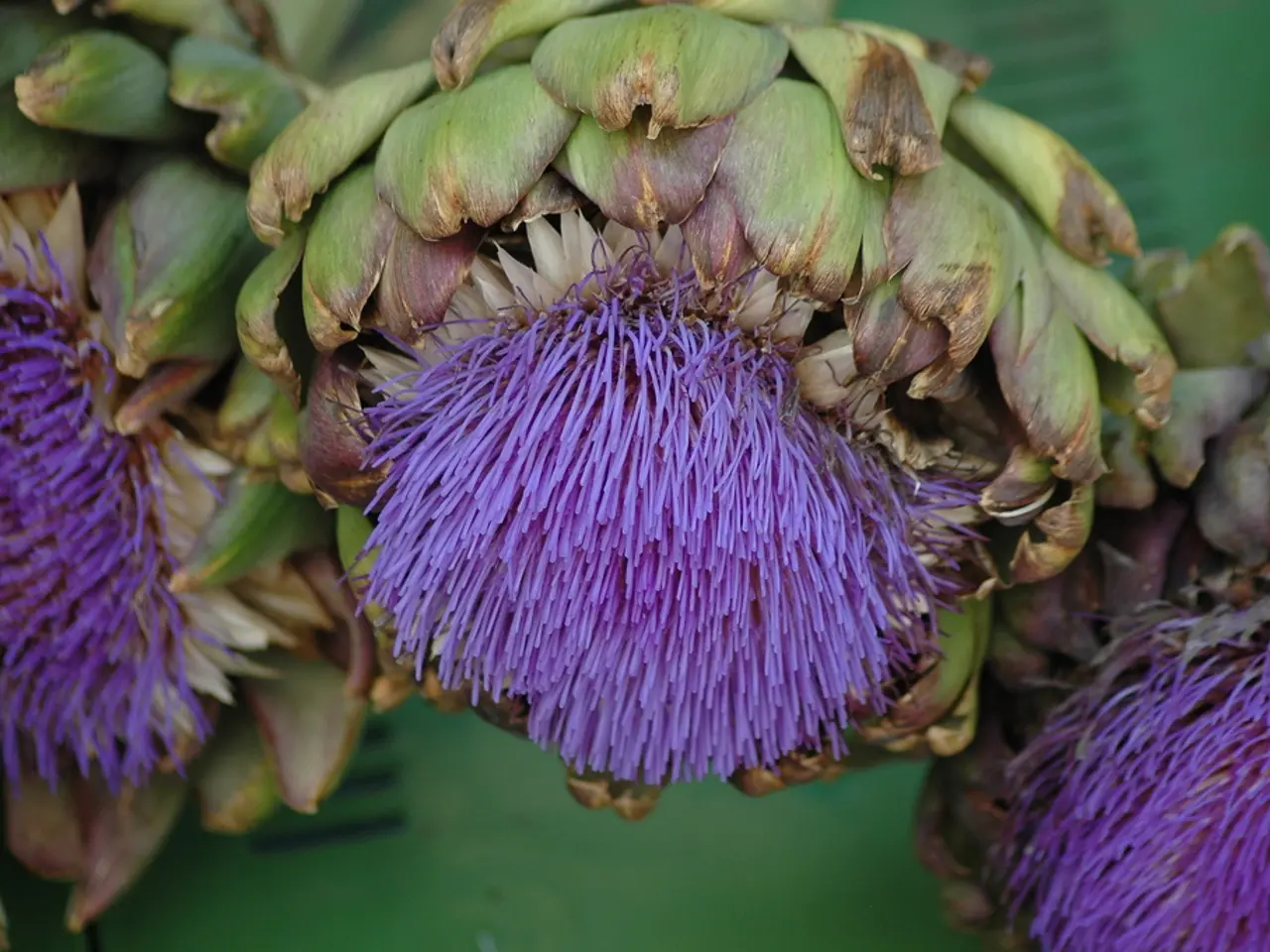Guide on Cultivating and Maturing Globe Artichokes
Globe artichokes, with their dramatic and ornamental appearance, make a delightful addition to any garden. Here's a step-by-step guide on how to grow, care for, and harvest these versatile plants.
**Suitable Soil and Site**
Globe artichokes thrive in full sun, warm conditions, and free-draining soil—ideal conditions for successful bud development and plant health. While they prefer warmth, they can tolerate a range of soil types, but heavy or poorly drained soils should be avoided to prevent root rot. Mulching helps retain soil moisture and suppress weeds, especially during the growing season.
**Climate Requirements**
Originating from the Mediterranean, globe artichokes do best in mild climates with warm, dry summers and cool, wet winters. Young plants are vulnerable to frost, so in cold regions, protection with mulch, cloches, or fleece is recommended during winter. Established plants are generally hardy, but severe or prolonged cold weather can damage or kill them.
**Planting Time**
- **Sowing seeds:** Start indoors 2–3 months before the last expected frost, planting seeds 1/4 inch deep in moist, well-draining soil. - **Transplanting:** Move young plants outdoors after the risk of frost has passed, once they have developed several true leaves. - **Propagation:** You can also propagate artichokes by dividing mature clumps in spring, detaching offsets with roots and planting them directly.
**Watering**
Established globe artichokes need little maintenance once established, but they benefit from regular watering during dry spells, especially as buds develop. Consistent moisture is key, but avoid waterlogged soil. Mulching helps retain soil moisture and reduces watering needs.
**Feeding**
Most soils provide adequate nutrition for globe artichokes. Feed in spring with an organic, high-potassium fertilizer only if plants are not cropping well or if grown in containers. Avoid over-feeding, as this can reduce flowering.
**Pest and Disease Control**
Common pests include aphids, slugs, and snails. Monitor plants regularly and use appropriate organic controls (e.g., traps, barriers, or approved insecticides). Good air circulation and proper spacing help prevent fungal diseases like powdery mildew.
**Supporting the Plants**
Staking is generally not required for globe artichokes, but if you live in a very windy area, loosely tying the stems may prevent damage.
**Harvesting**
Harvest the buds when they are still tightly closed, before the bracts (outer scales) start to open. A mature plant can produce up to 12 edible buds over the summer. The main bud at the top of the stem is usually the largest; secondary buds follow on side shoots. Cut the bud with a sharp knife, leaving 1–2 inches of stem attached. Smaller, tender buds can also be harvested.
**Overwintering**
In cold climates, after harvesting, cut the plant back and mulch heavily around the crown. In extreme cold, cover with spent foliage, straw, or a breathable fabric to protect the crown from frost.
By following these guidelines, you can grow, care for, and harvest globe artichokes successfully, yielding a flavorful and ornamental addition to your garden. Traditionally, artichokes are eaten steamed, broken apart into scales, and dipped into melted butter or hollandaise sauce. Enjoy your homegrown artichokes!
Embrace the Mediterranean charm in your homestead by planting globe artichokes, adding an ornamental touch to both your garden and home-and-garden lifestyle through their unique appearance. To ensure their optimal growth, place them in well-draining soil and a sunny location, making your garden the perfect setting for these versatile plants.




